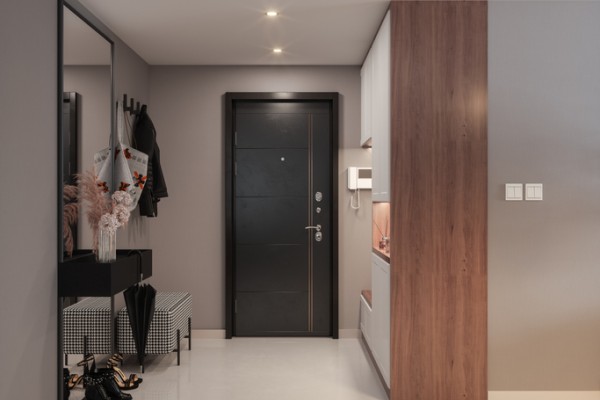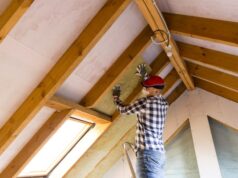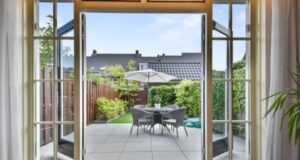
Interior doors may seem like a small design detail, but they can have a big impact on how your home looks, feels and functions. Whether you’re renovating a single room or fitting out a new build, it’s worth taking time to choose doors that suit your style, layout and budget.
From space-saving options to solid doors for privacy, here’s what to consider when selecting the right interior doors.
Door types and how they function
Different types of interior doors serve different needs. Some are chosen for privacy or sound control, others for the way they help a room feel more open or connected.
- Hinged doors are the most common. These swing open on hinges, usually into a room. They’re available in a wide range of materials and styles, from traditional timber to sleek flush designs.
- Sliding doors are ideal for tight spaces like laundries or ensuites. They slide along a track and can be concealed inside a wall cavity (pocket doors) or remain visible (barn doors).
- Bi-fold doors fold in on themselves to open up wider access. They’re often used for wardrobes, pantries or laundries, and you can read more about them here.
- Pivot doors offer a contemporary look and operate on a central axis, rather than side hinges. They’re more often used as feature entries but can be used internally in modern designs.
- French doors (double doors that swing open) can add elegance to formal living or dining areas. Glazed options help share light between rooms.
For a deeper dive into how different door types function, see our article on types of doors.
Materials: balancing form and function
The choice of material influences a door’s appearance, weight, soundproofing and durability.
- Hollow-core doors are lightweight and affordable, making them a popular choice for bedrooms, bathrooms and closets. However, they offer minimal sound insulation.
- Solid timber doors are heavier and more expensive, but provide better acoustic control and a premium feel. They suit homes where quality and noise reduction are a priority.
- Solid-core or composite doors have a timber or MDF core with a veneer or laminate outer layer. They offer good sound insulation and a smooth finish for painting or staining.
- Glass panel doors are great for allowing natural light into darker rooms or hallways. Frosted glass can provide privacy where needed.
To learn more about material options, you can explore articles on fibreglass doors, aluminium doors and steel doors.
Style and design considerations
Interior doors should match or complement your home’s overall design. Common styles include:
- Flush doors with a flat, smooth surface—great for minimalist or modern interiors.
- Panelled doors, with raised or recessed detailing, which suit traditional or transitional homes.
- Glazed doors, often with frosted or decorative glass panels, to visually open up spaces.
Think about how doors will interact with skirtings, architraves, flooring and wall colours. Consistency helps create flow, especially in open-plan designs.
Acoustic and privacy needs
For bedrooms, bathrooms or home offices, sound privacy matters. Solid or solid-core doors significantly outperform hollow-core options when it comes to reducing noise transfer. If you’re planning a home office, for example, investing in better-quality doors and seals can make a real difference.
Also consider the use of door seals, especially in bathrooms and laundries where moisture and noise need to be controlled.
Door handing and swing direction
Make sure your doors open in the most logical and space-efficient direction. It’s important to consider the placement of light switches, furniture and traffic flow. For more on this, check out our guide on door handing and swing direction.
If you’re planning a renovation or new installation, our article on door framing and installation will help you get the technical side right.
Safety and accessibility
Internal doors should meet accessibility needs where required. For example, wider doors (820mm or more) may be necessary in bathrooms or bedrooms for wheelchair access, and lever handles are easier to use than knobs for people with limited mobility.
If you’re working with the National Construction Code (NCC) or referencing AS 1428.1 for accessibility, door width, clearance and hardware must all comply.
Finishing touches
Don’t forget the hardware. The style and finish of hinges, handles and locks can elevate the look of a door and add personality. Consider brushed brass, matte black or stainless steel, depending on your interior palette.
Soft-close hinges, privacy locks and magnetic catches are small upgrades that can make daily use more comfortable and quiet.
Final thoughts
When choosing interior doors, you’re balancing functionality, aesthetics, acoustics and space. The best doors are the ones that suit your household’s needs while enhancing the design of your home.





